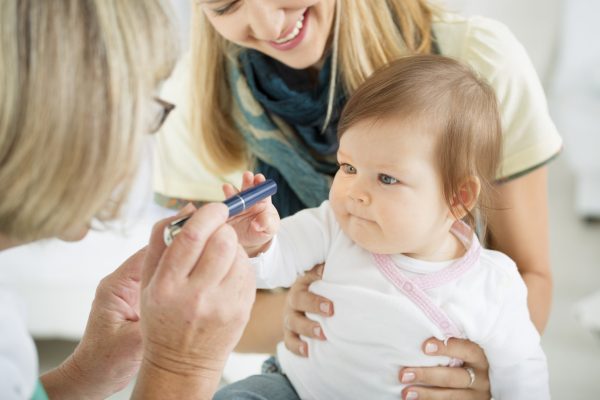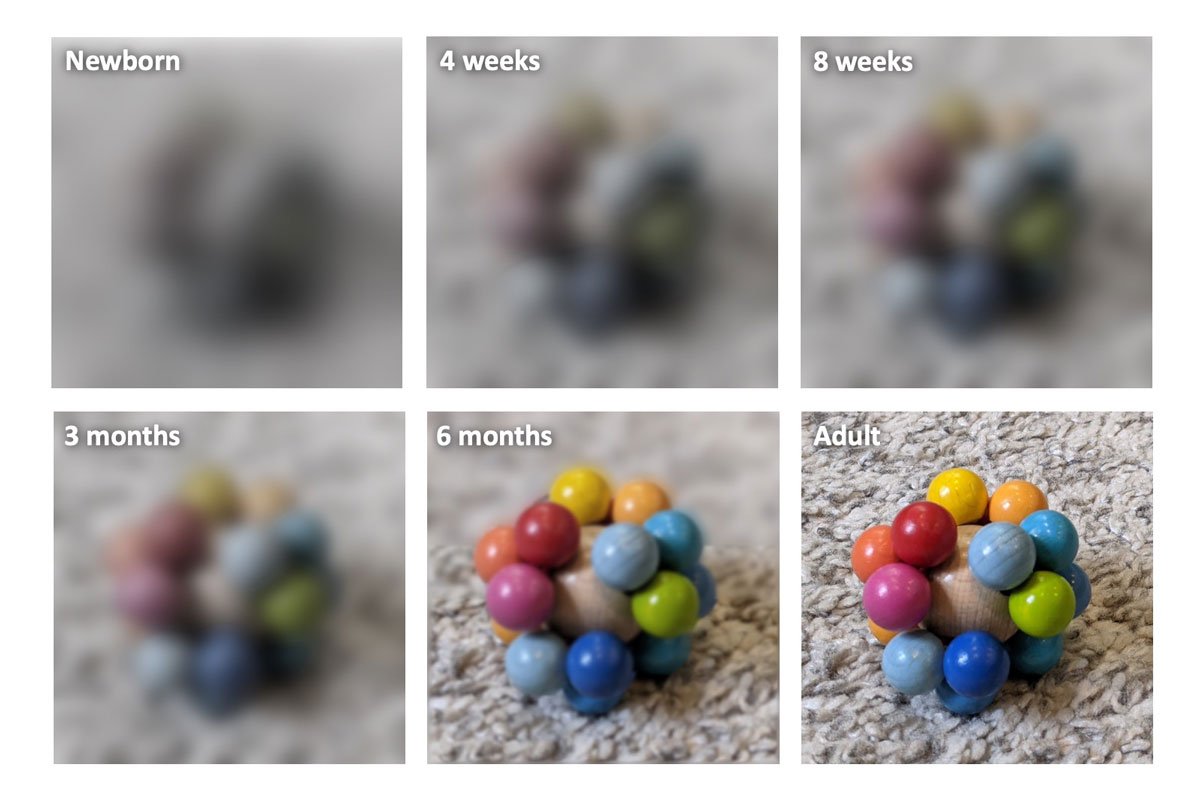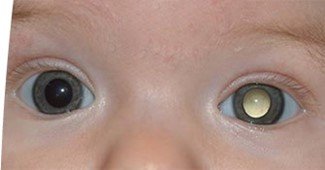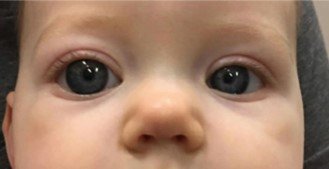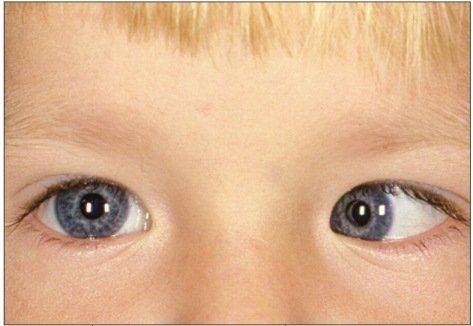My Child’s First Eye Exam…Where Do I Start?
As a parent, you want to set up your child for success right from the start. A big part of that success is making sure your child is healthy. Regular visits to the pediatrician are essential, and early dentist appointments can prevent problems with their teeth down the road…but when do children need to have their first eye exam? How do you do an exam on someone who may not be able to talk yet?
Starting Off Right – When to Schedule
When we are born, our vision is incredibly poor, usually somewhere around 20/400. To understand this, a newborn baby would be able to see an object clearly 20 feet in front of them, while their parents with perfect vision would see that same object clearly 400 feet in front of them. Thankfully, that poor vision doesn’t last! The eye develops remarkably fast, with most children being able to see 20/60 around 6 months old, and around 20/20 by the time they are 3 years old.
Because vision has improved so much by the time children are 6 months old, the American Optometric Association recommends that a child’s first eye exam occurs between the ages of 6-12 months of age.
This eye exam checks for a several important things. Firstly, we can see if your child is able to see details, and follow an object as it moves around. We will also look at how your child’s eyes work together. We check to see if they need a prescription for glasses using a small handheld device called a retinoscope, which works by neutralizing a light reflex in their eye with various lenses (it’s a lot of physics!). We’ll also do an evaluation of the inside of the eyes to make sure everything looks healthy (don’t worry, the drops are very mild and are safe for babies!). You can find out more about this first exam by visiting the InfantSEE website, which contains more information and a directory of Optometrists across the nation who volunteer to provide free eye exams to children ages 6-12 months. Both Dr. Seim and Dr. Richardson are InfantSEE providers, so feel free to contact our office to schedule your child’s first eye exam!
What Should I Be Watching For?
There are some conditions that are very obvious by just looking at your child’s face. If you notice your child has any of the following signs or symptoms, they should come in for an eye exam as soon as possible:
- A white pupil, especially in photos taken with the flash on
- Eye bulging out or sinking in
- One eye is turning in or turning out
- Excessive tearing
- Rubbing their eyes frequently
- Light sensitivity
All of these findings can be caused by specific conditions that can be treated. The sooner these problems are identified, the better outcome to be expected, meaning the more likely your child’s eyes will develop normally and result in good vision! It is also a good idea to get your child checked early if you know that the child’s biological parents have eye problems. Many of these conditions can be inherited, so make sure you tell your child’s doctor about any conditions you know about!
When Should Their Next Exam Be?
First thing’s first, if the doctor notices something abnormal at their very first exam, follow their directions for scheduling further appointments and treatment. While you may not notice anything specifically “wrong” with your child’s eyes, some of these conditions are invisible.
If everything checks out at their first exam as an infant and their doctor has no concerns, they should be good to go until they are 3 years old, or just starting preschool. Then again at age 5, before starting kindergarten.
Eye exams should be done yearly once a child is in school. This is not only to make sure they’re able to see far away and up close, but also to make sure their eyes are functioning well together and they are able to easily take in visual information and process it.
Do Vision Screenings or Vision Checks at the Pediatrician Count as an Eye Exam?
They do NOT. While vision screenings and checks with a pediatrician are a fantastic resource, they are very limited in what they are able to detect. Most of the time, these screenings assess your child’s visual acuity, or how small the letters or pictures are that they can correctly read on the chart. Some screenings may even be able to check for refractive error, or a glasses prescription. This is more typically referred to as one of the following:
-
Myopia (Near-sightedness): Can see things up close very well, but distance vision is blurry
-
Hyperopia (Far-sightedness): Can see things far away very well, but their eye focusing system has to be working around the clock to see things clearly. This may show up more as eye strain or headaches.
-
Astigmatism: This occurs when the clear part over the colored portion of our eye, called the cornea, is not perfectly shaped. Then this happens, light that enters the eye gets frayed out and may make lights appear to have starbursts around them, or objects appear distorted or shadowy.
While this is a good start, most screenings do not look at eye teaming skills, the focusing system of the eyes, the health of the eyes, or how children process visual information. A comprehensive eye exam is the only way all of these systems will be checked. Schedule an appointment for your child today with either Dr. Seim or Dr. Richardson!
